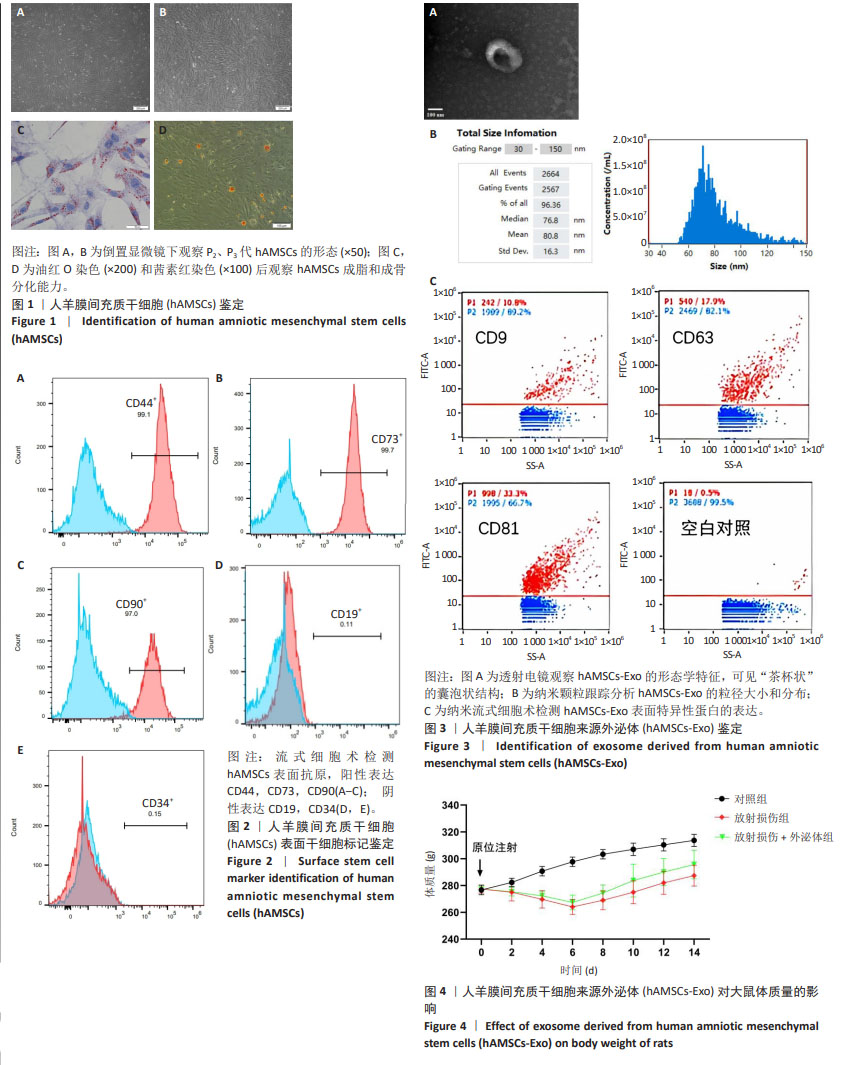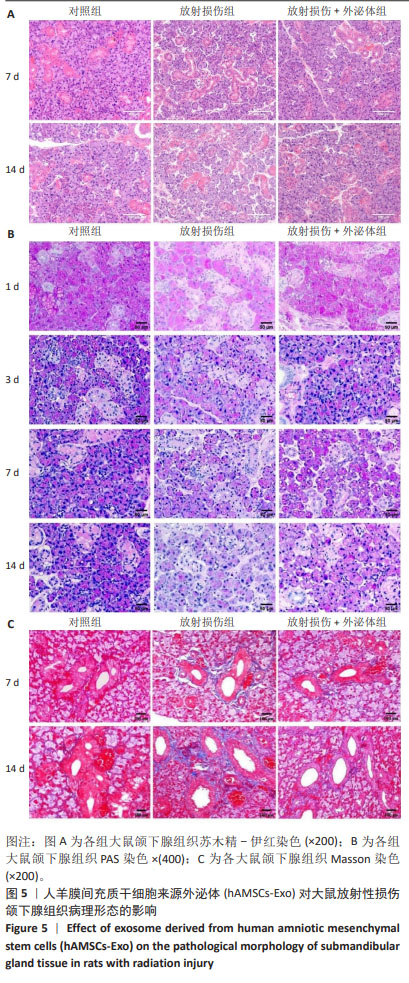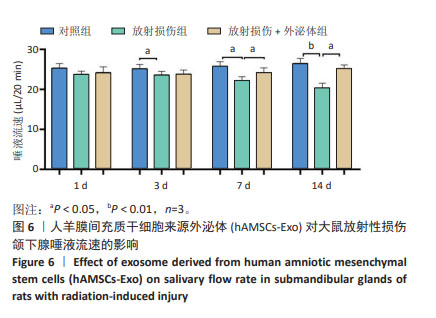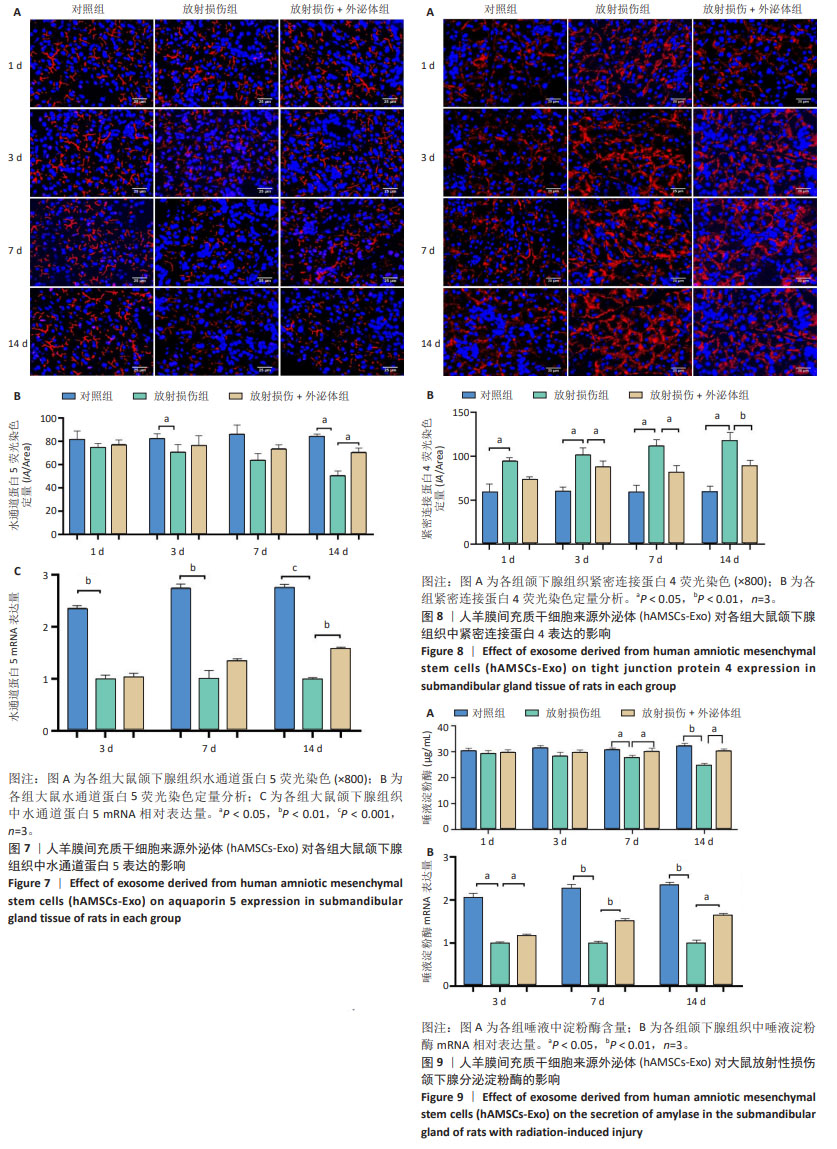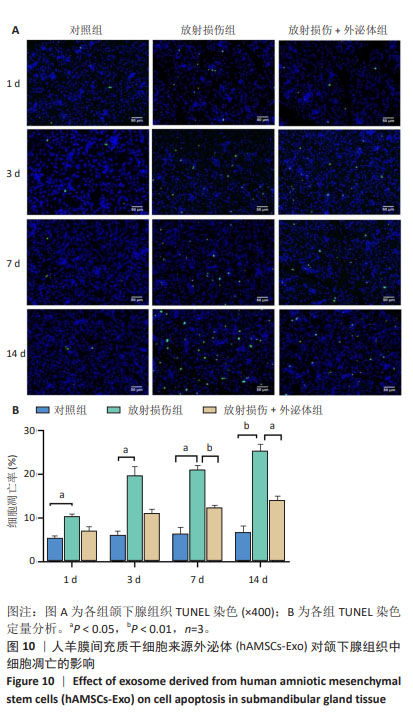[1] SUNG H, FERLAY J, SIEGEL RL, et al. Global Cancer Statistics 2020: GLOBOCAN Estimates of Incidence and Mortality Worldwide for 36 Cancers in 185 Countries. CA Cancer J Clin. 2021;71:209-249.
[2] SROUSSI HY, EPSTEIN JB, BENSADOUN RJ, et al. Common oral complications of head and neck cancer radiation therapy: mucositis, infections, saliva change, fibrosis, sensory dysfunctions, dental caries, periodontal disease, and osteoradionecrosis. Cancer Med. 2017;6: 2918-2931.
[3] LI SS, WU CZ, QIAO XH, et al. Advances on mechanism and treatment of salivary gland in radiation injury. Hua Xi Kou Qiang Yi Xue Za Zhi. 2021;39:99-104.
[4] ZHANG XM, HUANG Y, CONG X, et al. Parasympathectomy increases resting secretion of the submandibular gland in minipigs in the long term. Cell Physiol. 2018;234:9515-9524.
[5] ALMANSOORI AA, HARIHARAN A, CAO UMN, et al. Drug Therapeutics Delivery to the Salivary Glands: Intraglandular and Intraductal Injections. Adv Exp Med Biol. 2023;1436:119-130.
[6] PIRAINO LR, BENOIT DSW, DELOUISE LA, et al. Salivary Gland Tissue Engineering Approaches: State of the Art and Future Directions. Cells. 2021;10(7):1723.
[7] SONG W, LIU H, SU Y, et al. Current developments and opportunities of pluripotent stem cells-based therapies for salivary gland hypofunction. Front Cell Dev Biol. 2024;12:1346996.
[8] ChANSAENROJ A, YODDMUANG S, FERREIRA J, et al. Trends in Salivary Gland Tissue Engineering: From Stem Cells to Secretome and Organoid Bioprinting. Tissue Eng Part B Rev. 2021;27:155-165.
[9] MARINKOVIC M, TRAN ON, WANG HZ, et al. Autologous mesenchymal stem cells offer a new paradigm for salivary gland regeneration. Int J Oral Sci. 2023;15(1):18.
[10] KALLURI R, LEBLEU VS. The biology function and biomedical applications of exosomes. Science. 2020;367(6478):eaau6977.
[11] DAI S, WEN Y, LUO P, et al. Therapeutic implications of exosomes in the treatment of radiation injury. Burns Trauma. 2022;10:tkab043.
[12] KIMIZ-GEBOLOGLU I, ONCEL SS. Exosomes: Large-scale production, isolation, drug loading efficiency, and biodistribution and uptake. J Control Release. 2022;347:533-543.
[13] CHANSAENROJ A, ADINE C, CHAROENLAPPANIT S, et al. Magnetic bioassembly platforms towards the generation of extracellular vesicles from human salivary gland functional organoids for epithelial repair. Bioact Mater. 2022;18:151-163.
[14] XIAO XY, ZHANG NN, LONG YZ, et al. Repair mechanism of radiation-induced salivary gland injury by hypoxia-pretreated human urine-derived stem cell exosomes. Oral Dis. 2024;30(3):1234-1241.
[15] LIU QW, HUANG QM, WU HY, et al. Characteristics and Therapeutic Potential of Human Amnion-Derived Stem Cells. Int J Mol Sci. 2021; 22(2):970.
[16] HU ZM, LUO Y, NI RH, et al. Biological importance of human amniotic membrane in tissue engineering and regenerative medicine. Mater Today Bio. 2023;22:780-790.
[17] 崔田宁,张霓霓,龙远铸,等.低氧预处理人羊膜间充质干细胞外泌体修复放射性损伤唾液腺的实验研究[J].口腔医学研究,2022, 38(12):1145-1150.
[18] PORCHERI C, MITSIADIS TA. Physiology, Pathology and Regeneration of Salivary Glands. Cells. 2019;8(9):976.
[19] LI J, SUDIWALA S, BERTHOIN L, et al. Long-term functional regeneration of radiation-damaged salivary glands through delivery of a neurogenic hydrogel. 2022;8(51):eadc8753.
[20] KHOURY ZH, SULTAN AS. Prosthodontic implications of saliva and salivary gland dysfunction. J Prosthodont. 2023;32(9):766-775.
[21] 卢浩,张赐童,柳康,等.大鼠腮腺主导管结扎损伤诱导腺体萎缩的组织学变化[J].中华老年口腔医学杂志,2015,13(2):85-87.
[22] KIMBERLY J, JASMER, KRISTY E, et al. Radiation-Induced Salivary Gland Dysfunction: Mechanisms, Therapeutics and Future Directions. J Clin Med. 2020;9:100-105
[23] HYE J, HONG, JAE M, et al. Thermoresponsive fiber-based microwells capable of formation and retrieval of salivary gland stem cell spheroids for the regeneration of irradiation-damaged salivary glands. J Tissue Eng. 2022;13:575-581.
[24] NAM K, DOS SANTOS HT, MASLOW FM, et al. Copper chelation reduces early collagen deposition and preserves saliva secretion in irradiated salivary glands. Heliyon. 2024;10(2):e24368.
[25] 王英鑫.低氧预处理人羊膜间充质干细胞修复放射性涎腺损伤功能的研究[D]. 遵义:遵义医学院,2018.
[26] TIAN Q, CHEN XJ, WEI HY, et al. Telocyte-Derived Exosomes Provide an Important Source of Wnts That Inhibits Fibrosis and Supports Regeneration and Repair of Endometrium. Cell Transplant. 2023:32: 9636897231212746.
[27] CARLANDER AF, GUNDESTRUP AK, JANSSON PM, et al. Mesenchymal Stromal/Stem Cell Therapy Improves Salivary Flow Rate in Radiation-Induced Salivary Gland Hypofunction in Preclinical in vivo Models: A Systematic Review and Meta-Analysis. Stem Cell Rev Rep. 2024; 20(4):1078-1092.
[28] ZAYED HM, KHEIR E, ABU AM, et al. Gingival-derived mesenchymal stem cell therapy regenerated the radiated salivary glands: functional and histological evidence in murine model. Stem Cell Res Ther. 2024; 15(1):46.
[29] XU XY, XIONG G, ZhANG M, et al. Sox9 cells are required for salivary gland regeneration after radiation damage via the Wnt/β-catenin pathway. J Genet Genomics. 2022;49:230-239.
[30] KAZUO, H, CHEN JY, TAKAHIRO, et al. Dynamics of Salivary Gland AQP5 under Normal and Pathologic Conditions. Int J Mol Sci. 2020;21: 303-310.
[31] LAI Z, YIN H, CABRERA PJ, et al. Aquaporin gene therapy corrects Sjögren’s syndrome phenotype in mice. Proc Natl Acad Sci. 2016; 113(20):5694-5699.
[32] 崔荣兴,战丽彬,孙晓霞,等.阴虚津亏模型小鼠颌下腺AQP5及cAMP/PKA-CREB信号通路的表达与意义[J].中华中医药学刊, 2022,40(6):149-153.
[33] AN HY, SHIN HS, CHOI JS, et al. Adipose Mesenchymal Stem Cell Secretome Modulated in Hypoxia for Remodeling of Radiation-Induced Salivary Gland Damage. PLoS One. 2015;10(11):e0141862.
[34] KIM JH, JEONG BK, JANG SJ, et al. Alpha-Lipoic Acid Ameliorates Radiation-Induced Salivary Gland Injury by Preserving Parasympathetic Innervation in Rats. Int J Mol Sci. 2020;21(7):2260.
[35] LI J, SUDIWALA S, BERTHOIN L, et al. Long-term functional regeneration of radiation-damaged salivary glands through delivery of a neurogenic hydrogel. Sci Adv. 2022;8(51):eade8753.
[36] WU YH, XU H, YAO QT, et al. Effect of ionizing radiation on the secretion of the paracellular pathway in rat submandibular glands. Hua Xi Kou Qiang Yi Xue Za Zhi. 2021;39:267-273.
[37] YAMAMURA Y, AOTA K, YAMANOI T, et al. DNA demethylating agent decitabine increases AQP5 expression and restores salivary function. J Dent Res. 2012;91:612-617.
[38] CONG X, MAO XD, WU LL, et al. The role and mechanism of tight junctions in the regulation of salivary gland secretion. Oral Dis. 2024; 30:673-680.
[39] 姚清婷,吴言辉,刘少华,等.电离辐射对大鼠腮腺旁细胞分泌途径损伤及紧密连接蛋白claudin-4的影响[J].上海口腔医学, 2022,31(4):359-366.
[40] CONG X, ZHANG Y, LI J, et al. Claudin-4 is required for modulation of paracellular permeability by muscarinic acetylcholine receptor in epithelial cells. J Cell Sci. 2015;128:2271-2286.
[41] XIANG RL, MEI M, CONG X, et al. Claudin-4 is required for AMPK-modulated paracellular permeability in submandibular gland cells. J Mol Cell Biol. 2014;6:486-497.
[42] YAMAGISHI R, WAKAYAMA T, NAKATA H, et al. Expression and Localization of α-amylase in the Submandibular and Sublingual Glands of Mice. Acta Histochem Cytochem. 2014;47:95-102.
[43] DE FF, TOMBOLINI M, MUSELLA A, et al. Radiation therapy and serum salivary amylase in head and neck cancer. Oncotarget. 2017;8: 90496-90500.
[44] SHIN HS, LEE S, HONG HJ, et al. Stem cell properties of human clonal salivary gland stem cells are enhanced by three-dimensional priming culture in nanofibrous microwells. Stem Cell Res Ther. 2018;9(1):74.
[45] KIM JM, CHOI ME, JEON EJ, et al. Cell-derived vesicles from adipose-derived mesenchymal stem cells ameliorate irradiation-induced salivary gland cell damage. Regen Ther. 2022;21:453-459.
[46] DE MG, ÁGATHA N, NAGAI MA, et al. Apoptosis and proliferation during human salivary gland development. J Anat. 2019;234:830-838.
[47] HU S, CHEN B, ZHOU J, et al. Dental pulp stem cell-derived exosomes revitalize salivary gland epithelial cell function in NOD mice via the GPER-mediated cAMP/PKA/CREB signaling pathway. J Transl Med. 2023;21(1):361.
[48] LOMBAERT I, MOVAHEDEIA MM, ADINE C, et al. Concise Review: Salivary Gland Regeneration: Therapeutic Approaches from Stem Cells to Tissue Organoids. Stem Cells. 2017;35:97-105.
[49] KANG S, YASUHARA R, TOKUMASU R, et al. Adipose-derived mesenchymal stem cells promote salivary duct regeneration via a paracrine effect. J Oral Biosci. 2023;65:104-110. |
